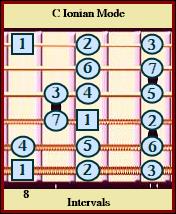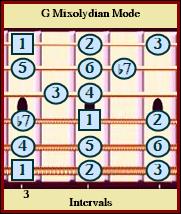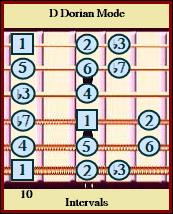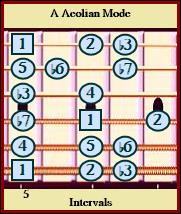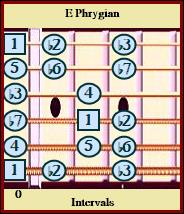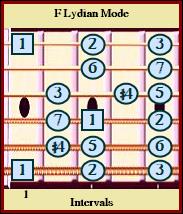Understand Major Scale Modes On The Guitar
Understand Major Scale Modes On Guitar
Understanding Major Scales Modes on Guitar seems to be the most confusing area of learning scales on guitar for a lot of people. Now there’s guitar scales explained in an easy-to-understand way. The biggest problem is how to simplify it at a level where people can grasp the order and concept. I suggest that you read my post (Interval Theory) to help prepare you for this understanding major scale modes article.
I picked the key of C Major Scale to make it clearer to understand, because there are no (b- Flats, #-Sharps) accidentals. Every scale has modes if it’s a five note scale there’s five modes, six notes – six modes. The major scales has seven notes and seven modes, The first note to the first note is C Ionian Scale Mode of the C Major Scale, (2nd to 2nd Degree ii) – D Dorian Scale Mode, (3rd to 3rd Degree iii) – E Phrygian Scale Mode, (4th to 4th Degree IV) F Lydian Scale Mode, (5th to 5th Degree V) – G Mixolydian Scale Mode, (6th to 6th Degree vi) – A Aeolian Scale Mode or Natural Minor Scale, (7th to 7th Degree vii) – B Locrian Scale Mode.
At this point you must be telling yourself these names are little Greek to me and it’s because they are. How are we suppose to learn and remember these weird names? Here is a mnemonic to help remember (If Dora Plays Like Me Alls Lost).
Each mode has a Interval Formula (Table-1)
Practice guitar scales by play one octave at a time (square to square) to hear the subtle sound of each mode. Singing each note out loud while playing can help you remember how each mode sounds. There is a great piece of software for ear training that I highly recommend called EarMaster5. It helps to better refine your ability to listen and recall the interval differences of each mode.
Let’s next look further into the scale formulas to help differentiate the relationships of scale modes. Every mode has the interval (3 – Major 3rd) or (b3 – Minor 3rd). The Ionian, Lydian, Mixolydian are Major Modes because of the (Major 3rd) interval. They are from the (1st, 4th & 5th notes) of the major scale. The blues progression roman numerals ( I, IV, V) come from the degrees of these major modes.
Major is suppose to be a happy emotional up sound. The minor modes (b3) are Dorian Scale, Phrygian Scale, Aeolian Scale or (Natural Minor). They are from the (2nd, 3rd & 6th notes – ii, iii, vi) of the major scale. The Aeolian Mode (vi degree) is the natural minor scale. The minor is suppose to give a dark sad emotional sound. The Locrian (7th note – vii) is the diminished mode because of the (b3 – Minor 3rd ) and (b5 – Diminished 5th). The Locrian Mode is supposed to give an evil edgy dissonant sound.
When you are ear training there are distinct interval sounds that help you narrow down which mode, like Phrygian and Locrian both have a (b2 – Minor 2nd) and to further distinct those apart is the (b5 – Diminished 5th) and (5 – Perfect 5th). Ionian and Mixolydian can sound the same and you have to hear the subtle difference between the (b7 – Minor 7th) and the (7 – Major 7th). The Lydian has a (3 -Major 3rd) and (#4 – Augmented 4th) which is the same as a (b5 – Diminished 5th confusing) this differentiates it from the Ionians (4 – Perfect 4th).
As your ear training gets better you’ll start to develop the ability to hear and pick out the modes from melodies and even chord progression in songs. As a final note and to rap things up some people have natural abilities to hear better than others. We all can achieve whatever we want with dedicated training, hard work and practice. Don’t compare yourself to others if they can and you can’t. This comes down to belief systems. If you think you can or can’t your right and there is no one else to change your mind but you.

